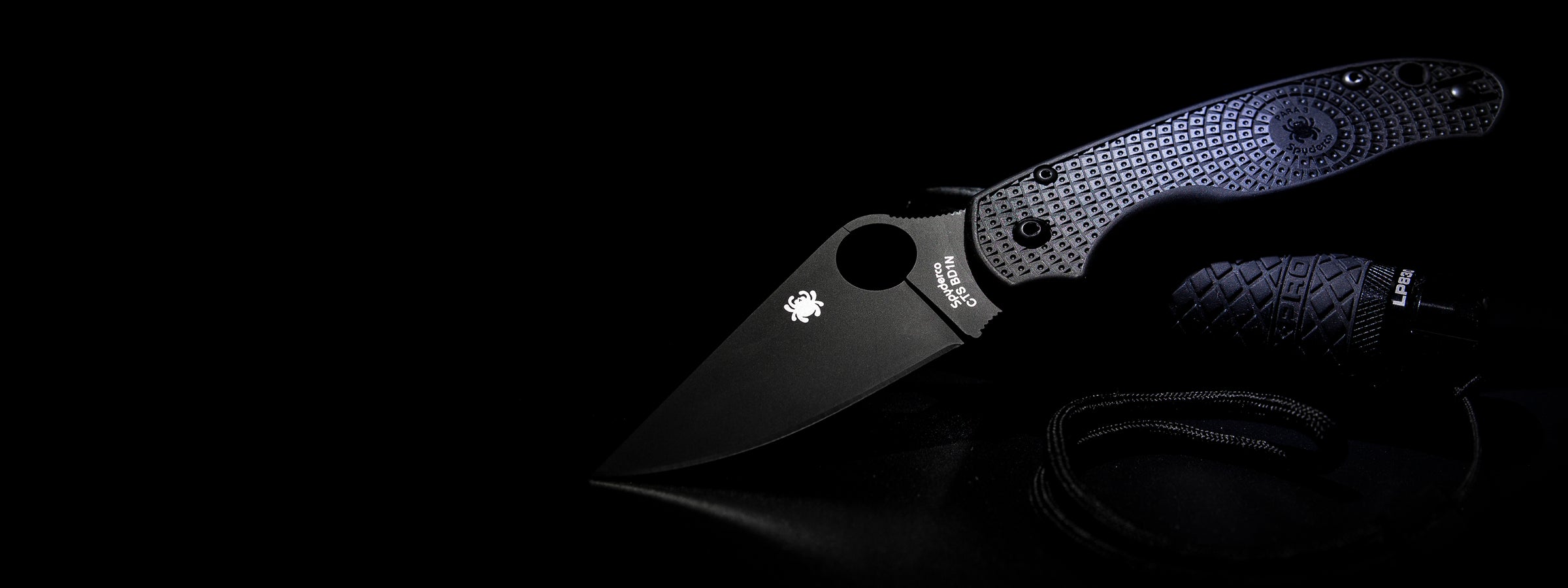Blade Coatings
Blade coatings are thin layers applied to the surface of a blade to reduce its reflective signature, enhance its aesthetics, or offer other performance benefits. Different coating materials and processes may reduce friction and can provide improved surface hardness, smoothness, and corrosion resistance. The final appearance of the coated blade is also affected by the surface preparation of the steel prior to the coating process.
Spyderco currently offers several different coatings on our blades and has plans to greatly expand our coating options in the near future. The coatings we currently employ are described in detail below.
Black Oxide
Black oxide is a conversion coating for ferrous materials, stainless steel, and other alloys. Although it adds mild corrosion resistance, it is primarily used to eliminate visual signature and glare and is often favored in tactical and military applications.
DLC (Diamond-Like Carbon) Coating
A type of PVD (physical vapor deposition) coating, DLC is a high-performance blade coating that combines properties of both diamond (AP3) and graphite (SP2). DLC provides exceptional hardness, low friction, and outstanding wear resistance while maintaining a sleek, non-reflective finish.
Ceramic Coating
A ceramic coating is a thin-film, ceramic-based coating that offers excellent durability and protection. Used to enhance a knife’s performance and aesthetics, it offers high resistance to abrasion, corrosion, and chemicals.
Titanium Carbonitride (TiCN) Coating
A chemical compound of titanium, carbon, and nitrogen, TiCN is a type of PVD (physical vapor deposition) coating. It is a relatively hard and wear-resistant ceramic material that reduces reflective signature and friction while enhancing wear resistance, chemical resistance, and corrosion resistance.
PVD (Physical Vapor Deposition) Coating
PVD is a surface modification process in which a thin film of material is deposited onto a substrate by vaporizing a source material and then condensing it on the substrate's surface. This process takes place in a vacuum or low-pressure gaseous environment.


